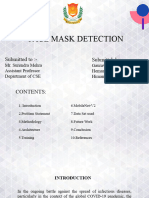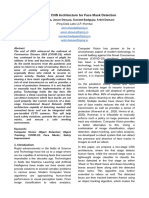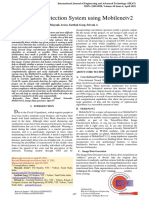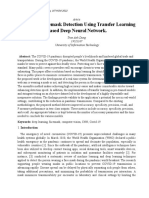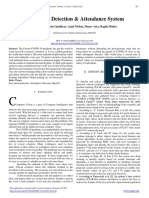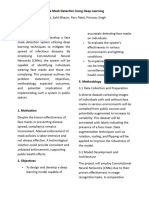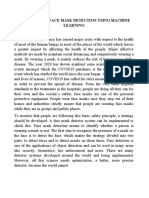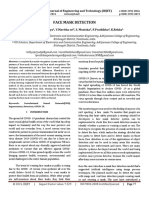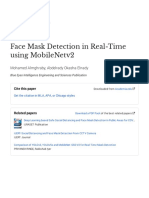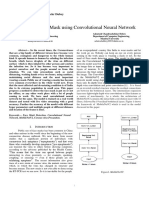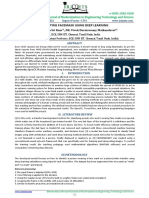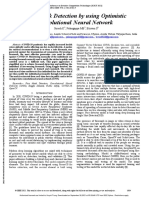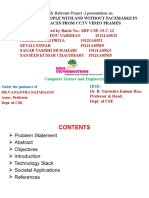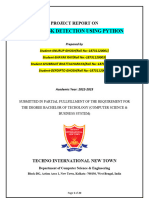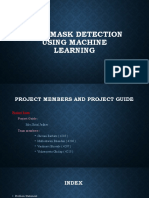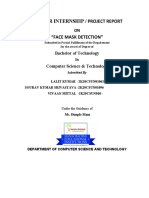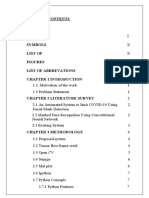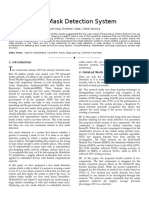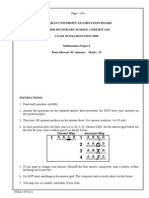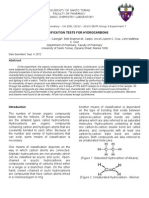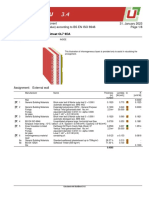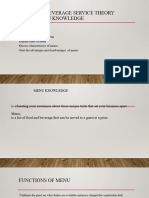0% found this document useful (0 votes)
9 views7 pagesProject Synopsis
The Face Mask Detection project aims to develop a robust model using deep learning and computer vision techniques to identify individuals wearing or not wearing face masks in real-time. Utilizing the MobileNetV2 architecture and OpenCV, the project emphasizes efficient image processing and machine learning methodologies to enhance public safety amid health crises. Future developments may include continuous training on diverse datasets and integration with public health systems for improved monitoring and compliance.
Uploaded by
nitesh7495Copyright
© © All Rights Reserved
We take content rights seriously. If you suspect this is your content, claim it here.
Available Formats
Download as ODT, PDF, TXT or read online on Scribd
0% found this document useful (0 votes)
9 views7 pagesProject Synopsis
The Face Mask Detection project aims to develop a robust model using deep learning and computer vision techniques to identify individuals wearing or not wearing face masks in real-time. Utilizing the MobileNetV2 architecture and OpenCV, the project emphasizes efficient image processing and machine learning methodologies to enhance public safety amid health crises. Future developments may include continuous training on diverse datasets and integration with public health systems for improved monitoring and compliance.
Uploaded by
nitesh7495Copyright
© © All Rights Reserved
We take content rights seriously. If you suspect this is your content, claim it here.
Available Formats
Download as ODT, PDF, TXT or read online on Scribd
/ 7
